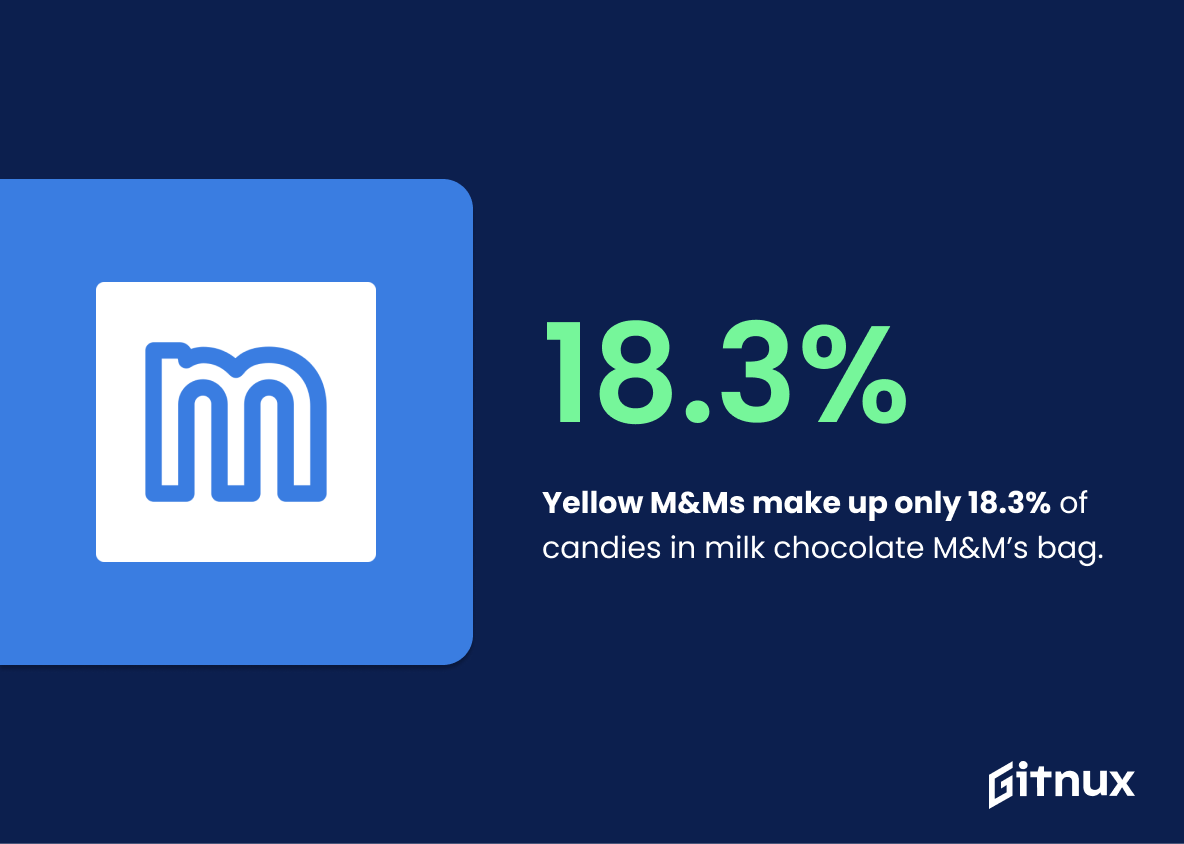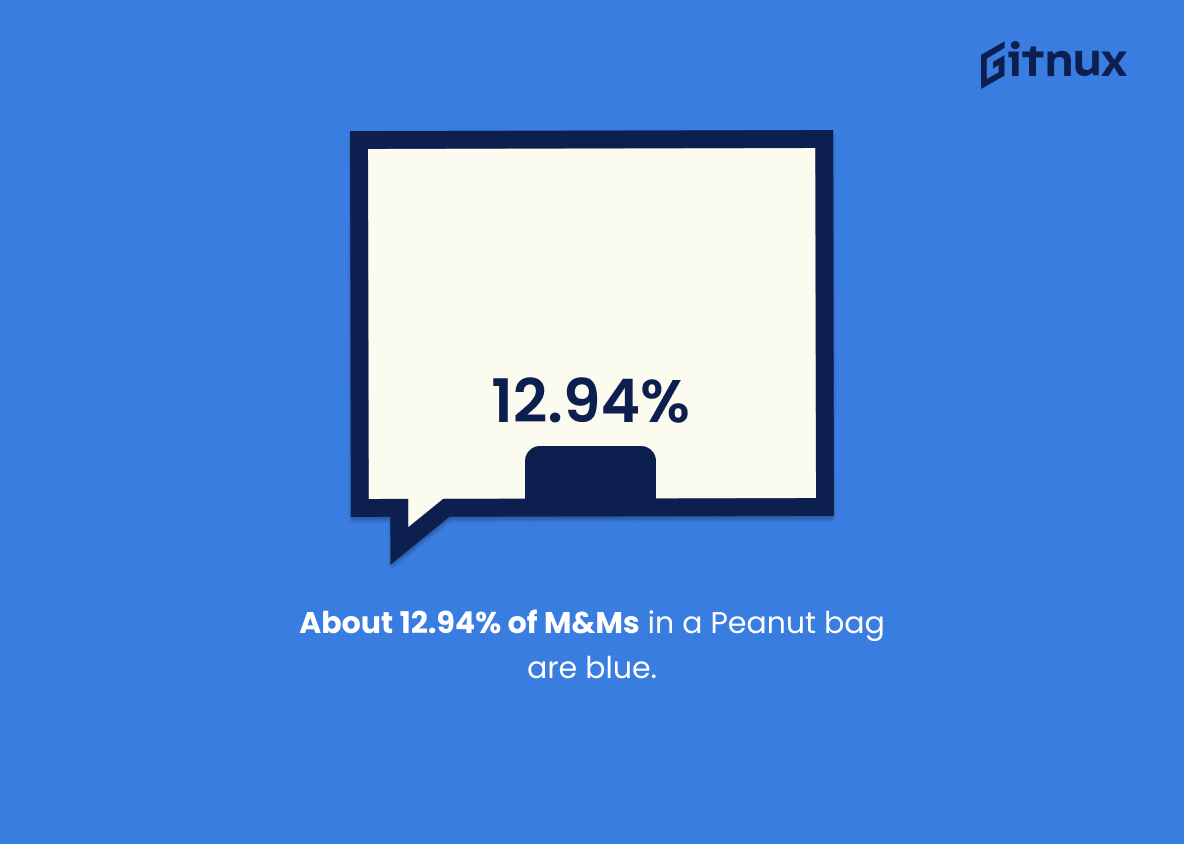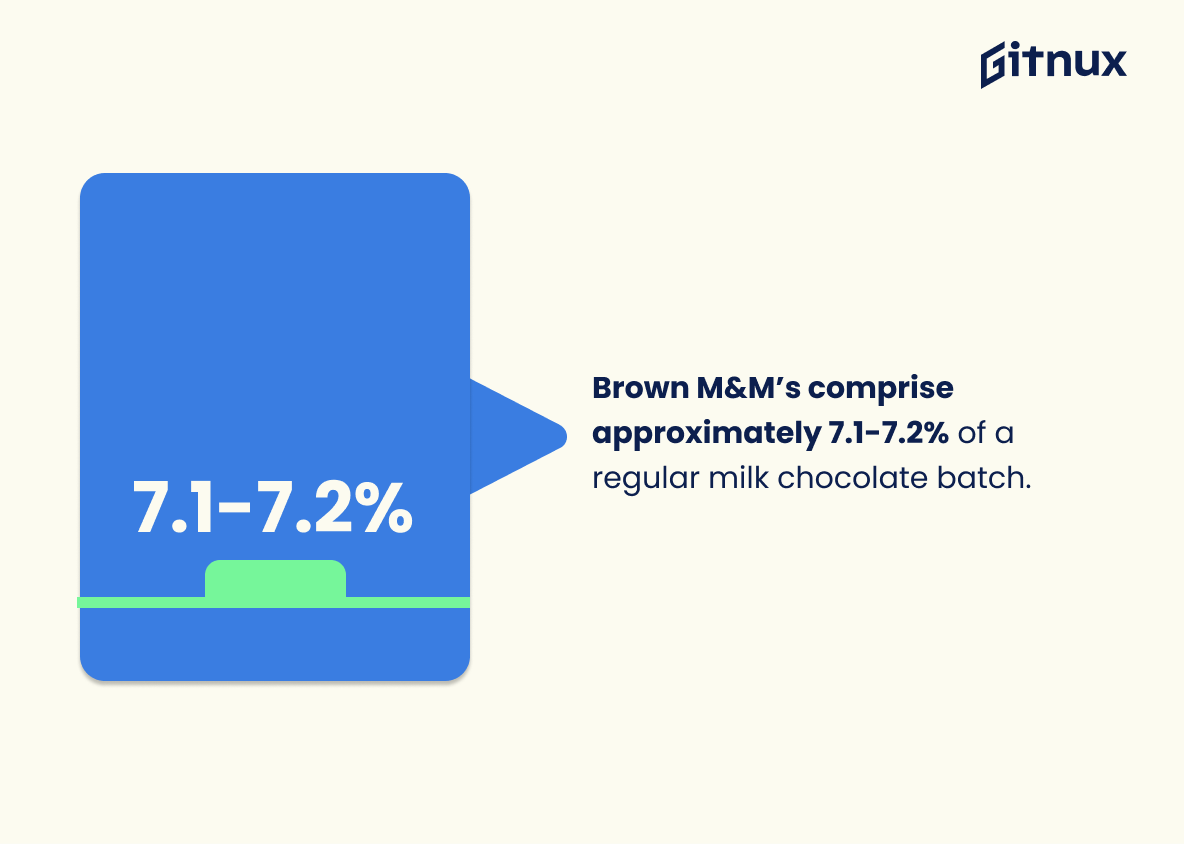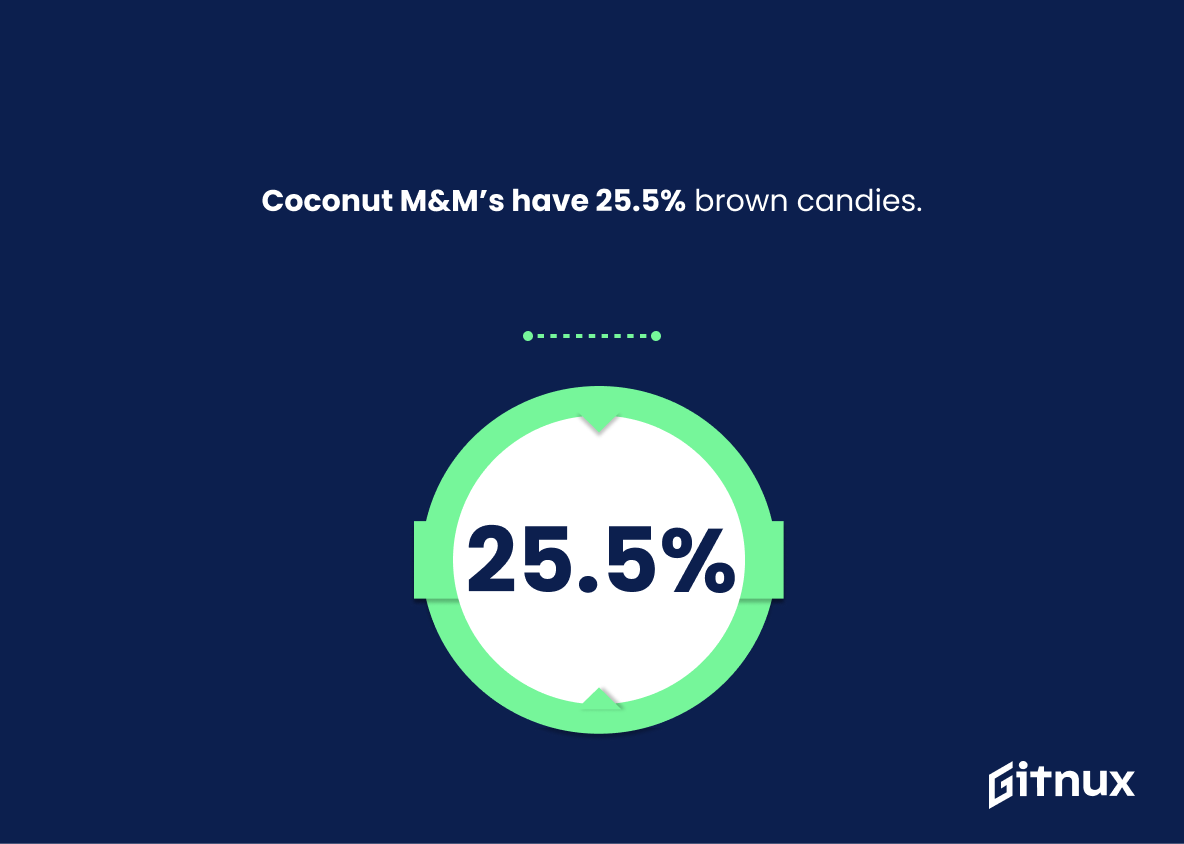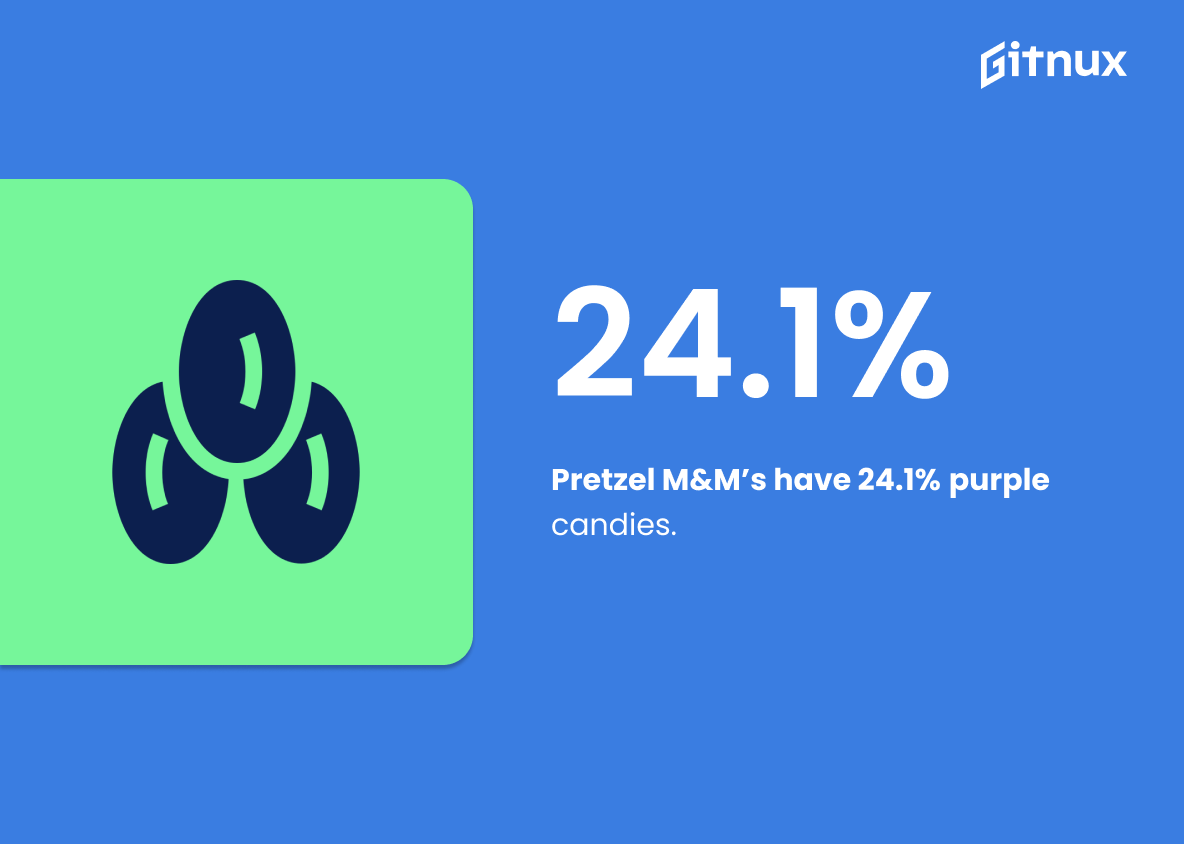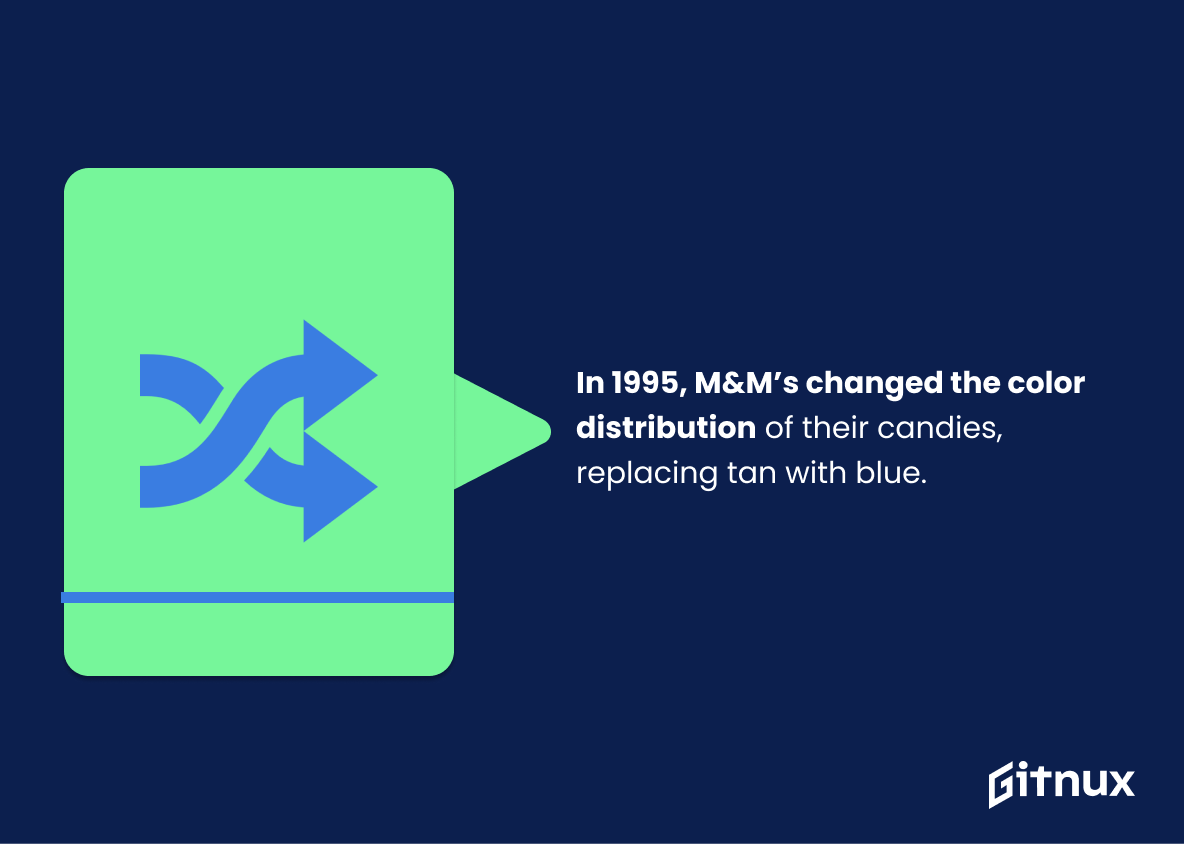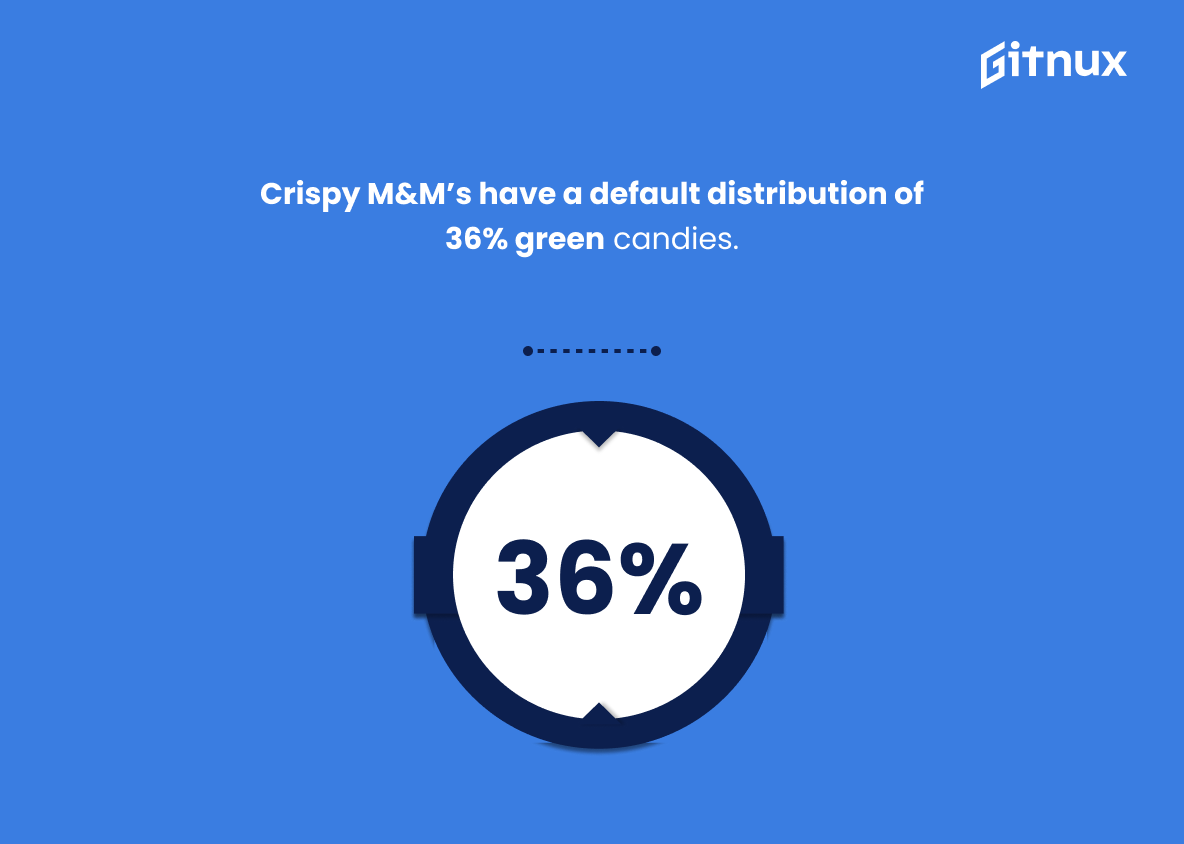Ever wondered about the color distribution in M&M’s candies? We’ve compiled key statistics on various M&M types. On average, regular milk chocolate M&Ms have 24.17% blue, 20.34% red, 16.3% green, 12.6% orange, and 18.3% yellow. In peanut bags, 12.94% are blue, 13.54% red, 15.40% green, 13.70% orange, and 15.50% yellow. Milk chocolate batches have 7.10-7.20% brown, while coconut batches have 25.50% brown.
Mint batches feature 20.30% dark green, dark chocolate 21.10% blue, crispy 36.00% green, and raspberry candies 20.20% dark red. These stats provide insight into your favorite candy’s production. Let’s take a closer look at the most important statistics about M&M’s color distribution.
M&M Color Distribution Statistics Overview
Yellow M&Ms make up only 18.3% of candies in milk chocolate M&M’s bag.
This statistic is significant in the context of M&M Color Distribution Statistics because it reveals the relative scarcity of yellow M&Ms compared to other colors. This information can be used to draw conclusions about the overall color distribution of M&Ms in a milk chocolate M&M’s bag, and can be used to compare the relative abundance of different colors of M&Ms.
About 12.94% of M&Ms in a Peanut bag are blue.
This statistic is a telling indication of the prevalence of blue M&Ms in a Peanut bag, providing a valuable insight into the color distribution of M&Ms. It is an important piece of information for anyone interested in the topic of M&M Color Distribution Statistics, as it gives a clear indication of the proportion of blue M&Ms in a Peanut bag.
Yellow candies account for 15.5% in peanut M&M’s packets.
This statistic is significant in the context of M&M Color Distribution Statistics because it provides insight into the prevalence of yellow candies in peanut M&M’s packets. It gives readers an idea of how often they can expect to find yellow candies in their M&M’s packets, and can help them make decisions about which colors to purchase.
Brown M&M’s comprise approximately 7.1-7.2% of a regular milk chocolate batch.
This statistic is an important piece of the puzzle when it comes to understanding the overall color distribution of M&M’s. It provides insight into the relative proportion of brown M&M’s in a regular milk chocolate batch, which can be used to compare the prevalence of other colors in the mix.
Coconut M&M’s have 25.5% brown candies.
This statistic is significant in the context of M&M Color Distribution Statistics because it provides insight into the proportion of brown candies in the Coconut M&M’s mix. Knowing this information can help people determine if they prefer a higher or lower percentage of brown candies in their M&M’s.
Pretzel M&M’s have 24.1% purple candies.
This statistic is significant in the context of M&M Color Distribution Statistics because it provides insight into the prevalence of purple candies in the Pretzel M&M’s mix. It gives readers a better understanding of the overall color distribution of the product, and can be used to compare the color distribution of other M&M’s products.
Mint M&M’s contain 20.3% dark green candies.
This statistic is a key piece of information for anyone looking to gain insight into the color distribution of Mint M&M’s. It provides a clear indication of the proportion of dark green candies in the mix, allowing readers to better understand the overall color composition of the candy.
The dark chocolate M&M’s packs include 21.1% blue candies.
This statistic is a key piece of information when it comes to understanding the color distribution of M&M’s packs. It provides insight into the proportion of blue candies in the mix, which can be used to compare the color distribution of different M&M’s packs. This data can be used to inform decisions about which M&M’s packs to purchase, or to simply satisfy curiosity about the color distribution of M&M’s.
In 1995, M&M’s changed the color distribution of their candies, replacing tan with blue.
This statistic is significant in the context of M&M Color Distribution Statistics because it marks a major shift in the color palette of the iconic candy. By introducing blue to the mix, M&M’s altered the visual landscape of the product, creating a new and exciting experience for consumers.
Crispy M&M’s have a default distribution of 36% green candies.
This statistic is an important piece of information when discussing M&M Color Distribution Statistics, as it provides a baseline for comparison. It serves as a reference point for other colors, allowing us to see how the distribution of colors changes over time or in different batches. Knowing the default distribution of green candies helps us to better understand the overall color distribution of M&M’s.
20% of raspberry M&M’s candies are dark red in color.
This statistic is significant in the context of the blog post about M&M Color Distribution Statistics because it provides a clear indication of the prevalence of dark red M&M’s in the overall population of M&M’s. It gives readers a better understanding of the color distribution of M&M’s and can be used to compare the relative abundance of different colors.
Conclusion
From the data presented, it is clear that M&M’s come in a variety of colors and flavors. The color distribution varies depending on the type of candy; for example, blue candies make up 24.17% of regular milk chocolate M&Ms but only 12.94% in peanut bags. Additionally, some special editions such as Crispy or Raspberry have unique distributions not found in other varieties. Finally, since 1995 when tan was replaced with blue there has been an overall increase in the percentage of blues across all types of M&M’s candies compared to before this change took place.
References
0. – https://www.nytimes.com
1. – https://www.newswise.com
2. – https://www.medallionretail.com
3. – https://www.zmescience.com
4. – https://www.foodandwine.com
5. – https://www.cookingpanda.com
6. – https://www.food.com
7. – https://www.coursehero.com
8. – https://www.medium.com
9. – https://www.datamonkeysite.com
10. – https://www.fooducate.com
11. – https://www.thespruceeats.com
12. – https://www.distractify.com
